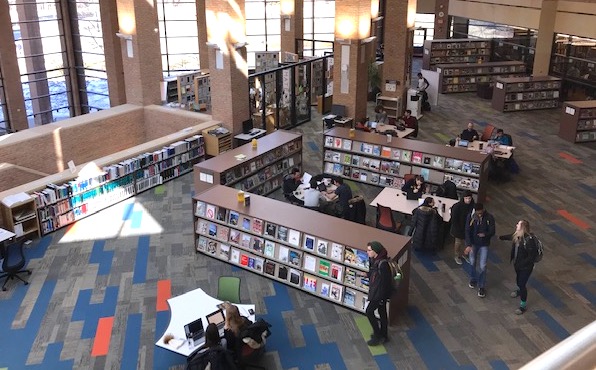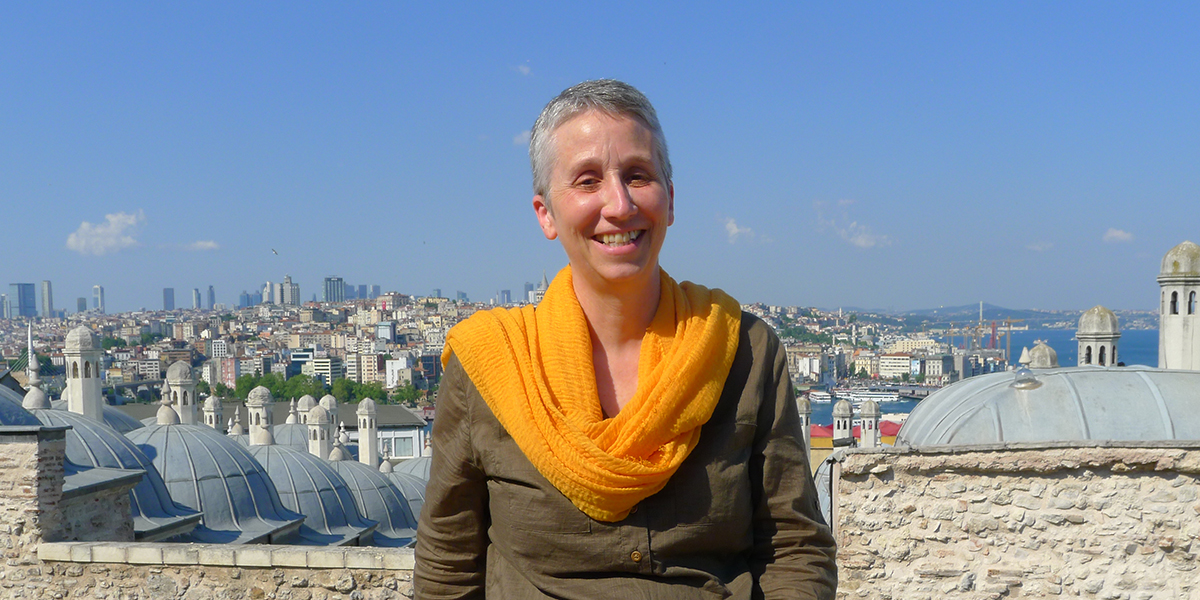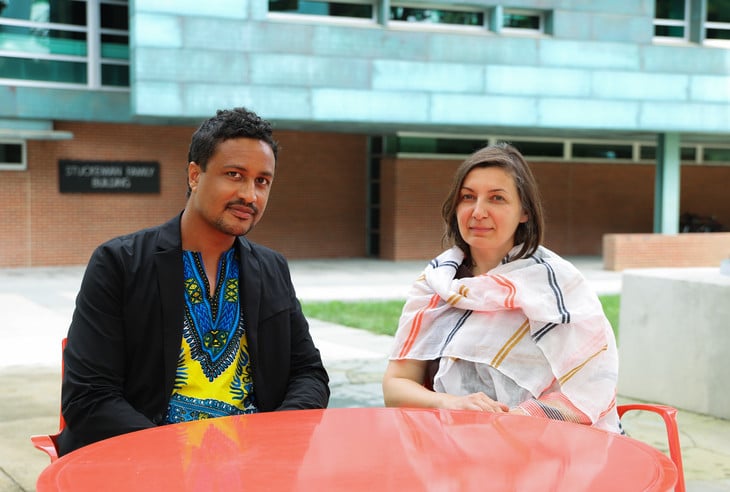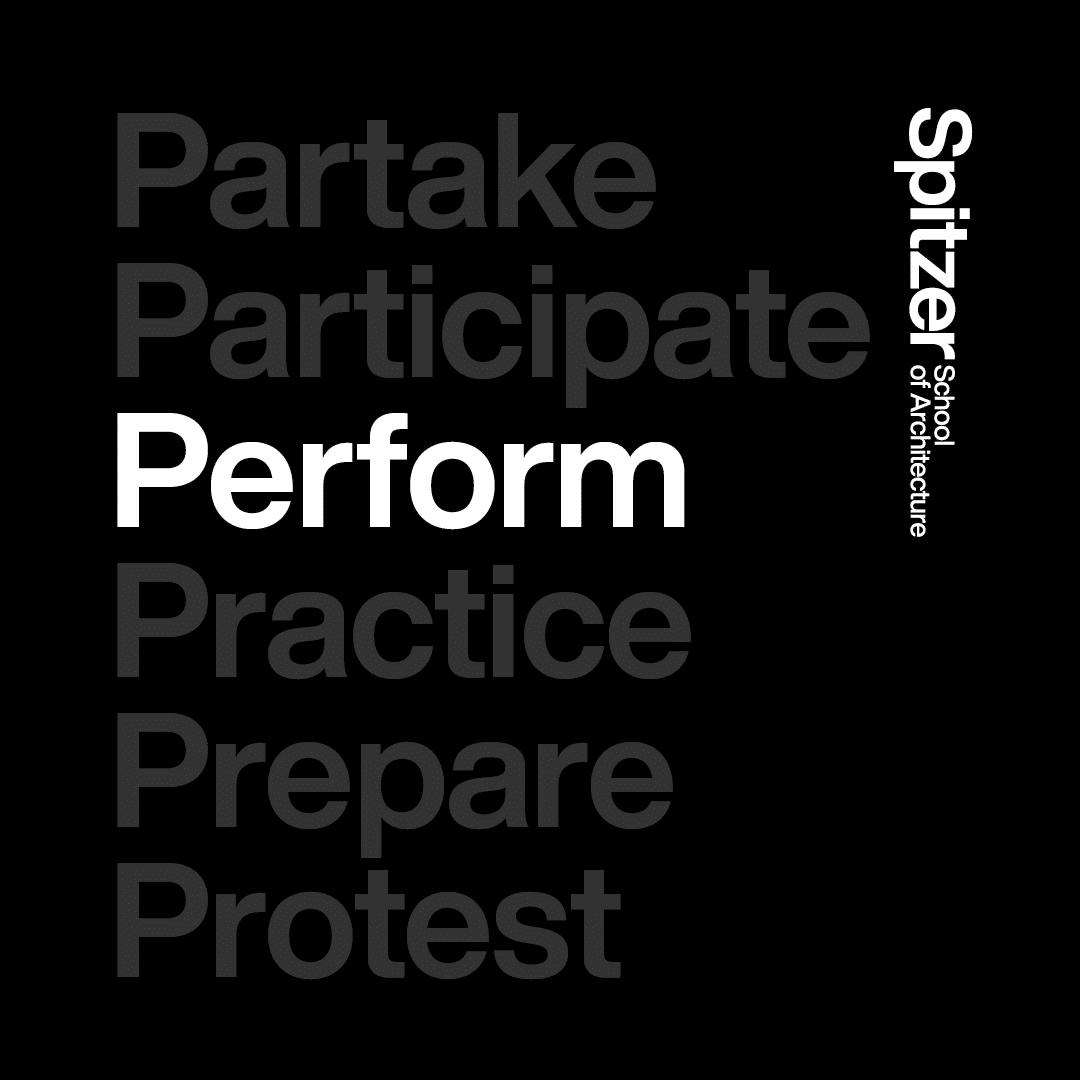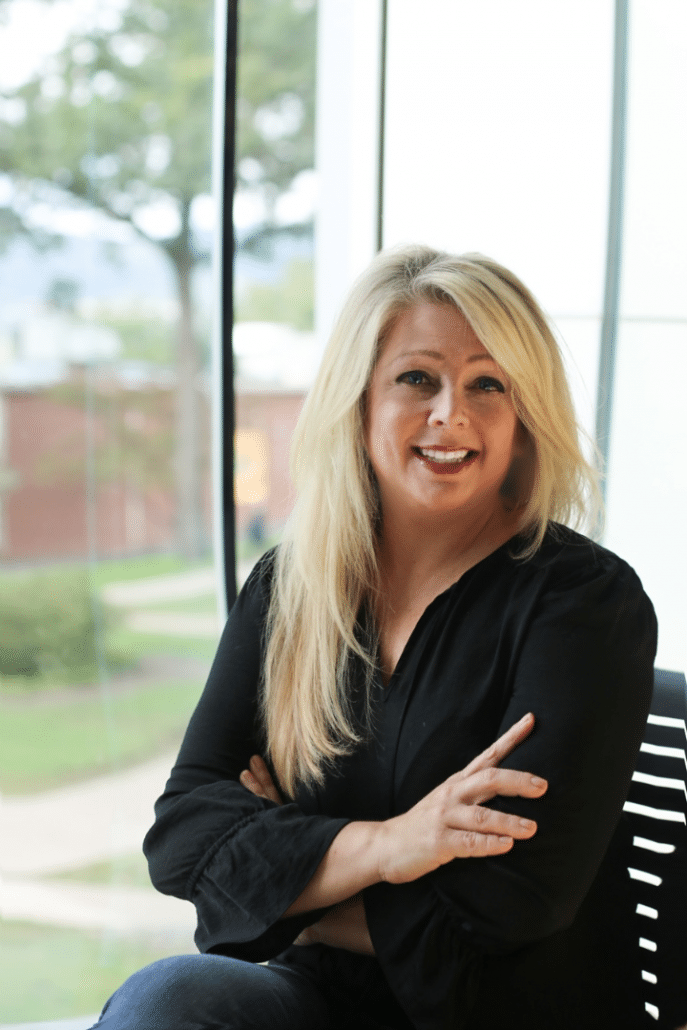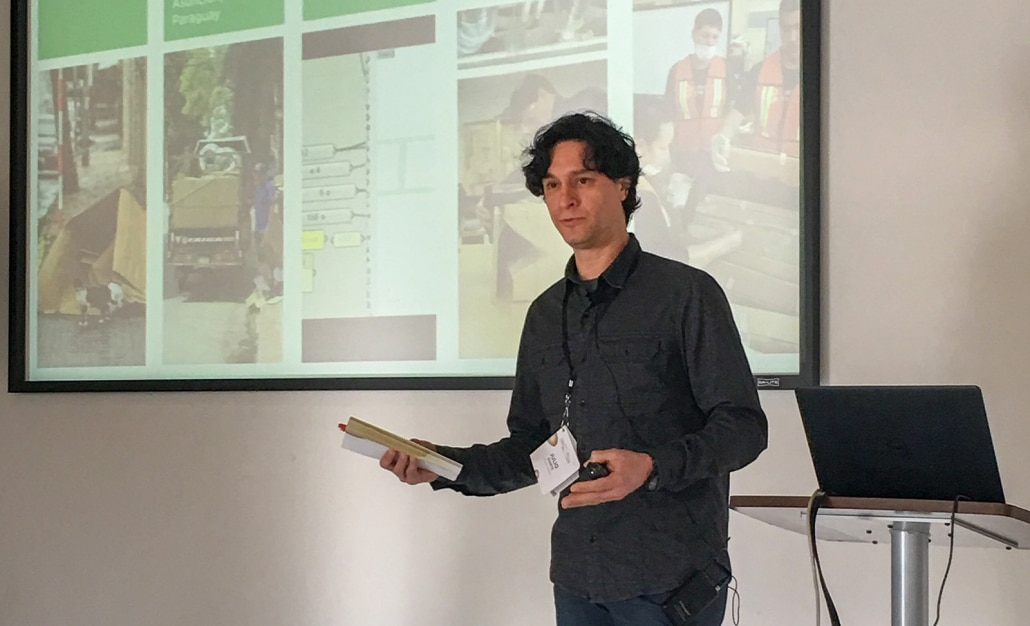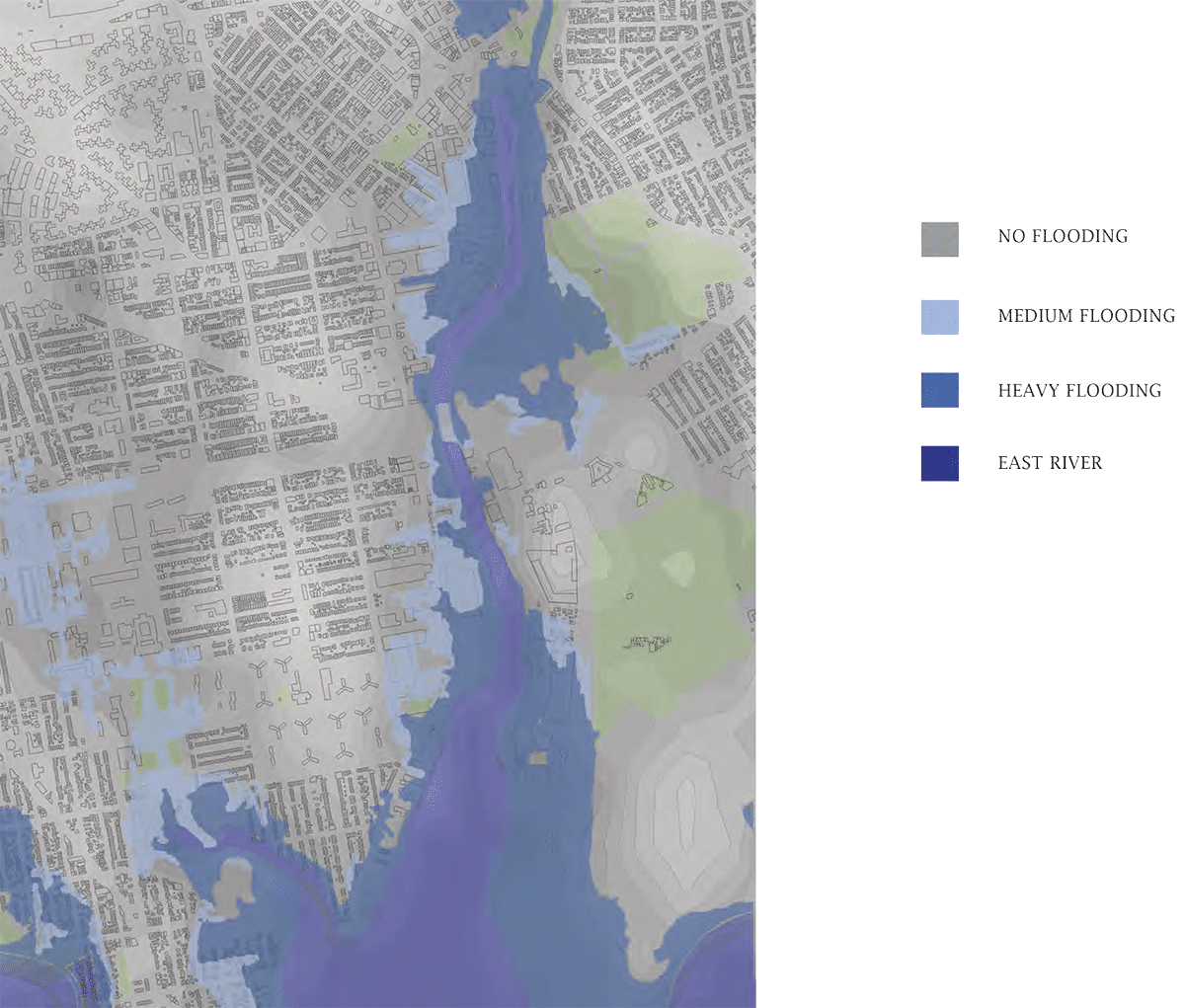Pennsylvania State University
UNIVERSITY PARK, Pa. — Penn State Stuckeman School architecture alumna Stella Murray was recently named a recipient of the Jonathan Speirs Scholarship which supports architecture students who wish to enter the architectural lighting design profession.
A Schreyer Honors College scholar with interdisciplinary honors in architecture and architectural engineering, Murray graduated with her research-based master’s degree in architecture in May while simultaneously earning undergraduate degrees in architecture (B.Arch.) and Italian.
According to John Roake, chairman of the Jonathan Speirs Scholarship Fund (JSSF) Board of Trustees, “Both [recipients] made outstanding submissions which concisely and clearly expressed their phenomenal passion and drive to use light as a major part of their ongoing studies, as well as their intended future careers.”
“It is difficult to fully express in words my gratitude for having been selected as a recipient of the Jonathan Speirs Scholarship Fund,” said Murray. “The scholarship grants me a host of opportunities; however, it is the acknowledgement of my potential as a lighting designer that means the most to me.”
The Jonathan Speirs Scholarship Fund is a UK-registered charity that has been set up at the behest of the late Jonathan Speirs to allow “a student of architecture to investigate the study of architectural lighting design.”
Speirs was recognized as one of the world’s leading architectural lighting designers up until his death in 2012 at age 54 due to cancer.
Murray was one of two recipients of the 2019-20 Speirs scholarship.
In addition to the Speirs award, Murray earned a 2020 Distinguished Master’s Thesis Award from Penn State for her thesis titled “Bringing to Light the Qur’an: The Theophany of Allah By Means of Lighting Design in the Süleymaniye Mosque.”
She was also recently named the recipient of the Architectural Research Centers Consortium (ARCC) King Student Medal for Excellence in Architectural and Environmental Design Research. The award acknowledges students for their innovation, integrity and scholarship in architectural and/or environmental design research.
Murray has been working virtually as an intern with Horton Lees Brogden (HLB) Lighting Design this summer. HLB leadership has been so impressed with her work and passion that she was offered a full-time position at the firm as a design assistant. She will transition into her new role at HLB in October.
Murray is also currently studying for the WELL Accredited Professional (AP) exam, which she plans to take in September. Being a WELL AP “denotes expertise in the WELL Building Standard and a commitment to advancing human health and wellness in buildings and communities around the world.”
Pennsylvania State University
UNIVERSITY PARK, Pa. – The Agbogbloshie Makerspace Platform (AMP), which was founded by Penn State Stuckeman School faculty members DK Osseo-Asare and Yasmine Abbas, has been awarded the Smart Cities Urban Innovation Award for Citizen Engagement in the Le Monde 2020 Global Urban Innovation Challenge.
The annual Le Monde competition promotes the best urban transformation projects worldwide and awards those that: stand out for their originality, efficiency and impact; address the area’s major challenges, such as global warming, social and gender inequalities, democratic governance, etc.; contribute to improving city services and quality of life; and draw upon citizen involvement. The 2020 competition drew 61 entries representing five continents — down from the average of 200, which can be attributed to the COVID-19 pandemic. Entrants are vying for the overall Grand Prix (Grand Prize) and the top prize in each of five categories: mobility, energy, habitat, urban planning and civic engagement.
An international selection committee comprised of experts in urban change submitted its top choices to the jury, comprised of journalists from Le Monde, who named the awardees.
The civic engagement award, in particular, celebrates “a democratic, horizontal process, whereby citizens play a role in developing and managing physical and virtual urban spaces and services.”
Launched in 2012 by Osseo-Asare, assistant professor of architecture and engineering design who also leads the Humanitarian Materials Lab at Penn State, and Abbas, assistant teaching professor of architecture, the AMP is a transnational project that helps bolster maker ecosystems in Africa by teaching students and young professionals how to reuse recycled materials.
The project, which is in Ghana, has received numerous accolades, winning the Rockefeller Foundation’s Centennial Innovation Challenge and Design Corps’ 2017 SEED Award for Public Interest Design. The AMP was also exhibited at the 2017 Seoul Biennale for Architecture and Urbanism.
Osseo-Asare is a cofounding principal of Low Design Office (LOWDO), an architecture and integrative design studio based in Austin, Texas and Tema, Ghana that explores the links between sustainability, technology and geopolitics. LOWDO was a finalist for the Museum of Modern Art (MoMA) and MoMA PS1 Young Architects Program in 2019 and was named to Domus magazine’s 50 Best Architecture Firms in 2020 list.
Le Monde is a French daily newspaper with a circulation exceeding 323,039 copies per issue in 2009. It is considered one of France’s three newspapers of record.
City College of New York
Established shortly after the killing of George Floyd in June 2020 and against the backdrop of global anti-racism protests, the Spitzer School of Architecture’s Floyd’s List is both a resource list and a weekly forum. It is an attempt to create spaces where we are able to communicate freely and openly; to share perspectives and experiences; to experiment boldly and bravely; to explore ideas and understand where they come from. We ask participants to be prepared to have assumptions challenged and tested and to respect the discussion house rules which precede all events. All Floyd’s List events are free open to the public.
This week’s Floyd’s List event, “Spirit in the Dark” will take the form of two short video performances by UK-based architects/artists Rosa-Johan Uddoh and Dr Thandi Loewenson, followed by a discussion. Their talk will focus on the twin roles of the imagination and creative practice as tools to navigate complex and challenging questions of race, identity, narrative and community-based practice.
Rosa-Johan Uddoh is an interdisciplinary artist working towards radical self-love, inspired by black feminist practice and writing. Through performance, installation and ceramics, she explores an infatuation with places, objects or celebrities in British popular culture, and the effects of these on self-formation. Rosa is currently the Stuart Hall Library Resident for 2020 and is also a lecturer in Performance at Central Saint Martins, London.
Thandi Loewenson is an architectural designer/researcher who operates through design, fiction and performance to interrogate our perceived and lived realms and to speculate on the possible worlds in our midst. Mobilising the ‘weird’ and the ‘tender’, she engages in projects which provoke questioning of the status-quo, whilst working with communities, policy makers, artists and architects towards acting on those provocations. Thandi is a tutor at the Royal College of Art, London, and a Visiting Professor at the Aarhus School of Architecture.
The event and discussion will be hosted by Dean Lokko.
When: Wednesday July 1st @ 5pm.
Link in bio https://ccny.zoom.us/j/96097850241
Marywood University
Press Release
For Immediate Release
June 10, 2020
Contact: Chelsea Gauthier, Associate Director
Chelsea@centerforthelivingcity.org
Center Selects New Executive Director
A Marywood University Professor, Maria MacDonald, has been named executive director of the national nonprofit, Center for the Living City, founded 15 years ago by friends of urban writer and activist Jane Jacobs.
Jane Butzner Jacobs grew up in Scranton before her career as an author and activist in New York City and Toronto. MacDonald, who lives on the same block where Jacobs grew up, will be only the second director for the organization. She replaces the center’s founding executive director, Stephen Goldsmith, who is stepping aside to focus his time advancing the center’s global Observation & Action Network. Goldsmith will remain on the center’s board of directors.
MacDonald is director of the Interior Architecture program at Marywood University’s School of Architecture in Scranton. She is a founding faculty member of the School of Architecture, where she will continue to work, and a practicing interior architect. She specializes in adaptive reuse, preservation, and restoration projects.
The Center for the Living City is a U.S.-based nonprofit launched in 2005 by a group of activists, practitioners, and teachers. It holds the distinction of being the only urbanist organization founded in collaboration with Jane Jacobs, whose criticism of urban planning, especially urban renewal, led to revolutionary changes in how urban planning is taught and practiced.
The center’s governing board selected MacDonald from more than 70 applicants. “From a strong field of applicants, Maria impressed all of us with her passion for Jane Jacobs’ ideals of community and neighborhood engagement plus the power of observation. We were also impressed with her work building a school of architecture at Marywood, and that she’s helping a new generation of designers think holistically about cities,” said the center’s board chair, Mary Newsom, a Charlotte, N.C., journalist. “She makes me excited about visiting Scranton.”
In addition, Newsom said, “We’re intrigued with Maria’s insights into the importance of Jane Jacobs’ thinking for Scranton and the whole Lackawanna Valley area, as well as mid-sized cities across the nation. And with her understanding of the city as a complex ecology, she’ll be a dynamic force in moving the center into our next chapter.”
MacDonald, who grew up in Dunmore, is a graduate in both Architecture and Interior Architecture from Rhode Island School of Design, where she received the Excellence in Design award for her work on the “Reclamation of Forgotten Spaces.”
With more than 25 years’ experience, she has partnered her professional practice with her teaching, using an integrative, holistic design approach that aims to strengthen the relationships between the allied design disciplines and people and the environments in which they live.
“I am thrilled to have been selected to work with the center’s board and staff to advance their mission,” MacDonald said. “This is an exciting time for Dunmore and Scranton and all of the universities and nonprofits working tirelessly. Through Jane’s work we will celebrate her legacy and shine a light on her hometown, which she loved so deeply.”
Stephen Goldsmith, a co-founder of the center who has been its only executive director, noted, “To have seen how our work found its way into the classrooms at Marywood University in Scranton was especially meaningful. The center was founded with the support and encouragement of Jane Jacobs, and to have our new director possess all the skills, knowledge, values and passion we were seeking, AND live in Jane’s backyard makes this all the more meaningful.”
Jane Jacobs, who is widely considered the foremost urbanist of all time, wrote:
“Cities have the capability of providing something for everybody, only because, and only when, they are created by everybody.” [From The Death and Life of Great American Cities]
The Center for the Living City works to inspire civic engagement and leadership, invite creative urban solutions, and expand understanding of the ecology of cities. Among its projects have been a nationwide lecture series on the 100th anniversary in 2016 of Jane Jacobs’ birth, encouraging and supporting Jane Jacobs Walks in numerous cities, and expanding its Observe program for neighborhood residents and leaders around the globe. Earlier this year the center launched the Observation and Action Network, a collaboration among the center, the Urban Design Collective, and the National Association of Students of Architecture in India. The network aims to encourage like-minded young leaders around the world to imagine and implement a better future for the places they care about.
Support for the center’s programs has been provided by the Ford Foundation, Rockefeller Foundation, Rockefeller Brothers Fund, the John S. and James L. Knight Foundation, Furthermore, and many individual donors.
Pennsylvania State University
UNIVERSITY PARK, Pa. — Julio Diarte, an architecture doctoral candidate in the Stuckeman School who is focusing his research on repurposing waste materials for low-cost housing, has been named a 2020 Engineering for Change (E4C) Research Fellow.
The E4C Research Fellowship Program is extremely competitive; more than 420 applications from 72 countries were whittled down to the 2020 cohort of 25 researchers. The program is designed to prepare professionals to solve local and global challenges and create knowledge as a public good. Fellows support the development of research collaborations defined together with E4C’s local and global partners.
A native of Asunción, Paraguay, Diarte said the fellowship program stood out to him because of its ability to run remotely while allowing him to continue his work, which focuses on developing technologies for upcycling waste cardboard as construction materials for low-cost housing.
As a researcher, Diarte believes it is essential to facilitate conversations with people around the world to promote diversity and to communicate the importance of his work. He is also fascinated by research that can be accomplished in collaboration with international institutions that are working on real-world problems in underserved communities.
“I thought this fellowship could be an excellent opportunity to connect with these institutions and learn what they do, how they work and potentially work with them in the future,” he said. “I became interested in global development because we are living in an ‘all hands-on-deck’ environment where underserved communities worldwide demand the collaboration of architects and designers to improve their environment.”
As an E4C Fellow in the Habitat sector, Diarte is part of a multidisciplinary research team that collaborates with Penn State. The research investigates affordable housing and disaster risk reduction in East African countries.
“In addition to the research collaboration between E4C and Penn State, I will be researching technologies that will be incorporated in the E4C Solutions Library,” Diarte said. “The library is a living database of innovative products and services for those living in resource-constrained environments. The library includes technologies in agriculture, energy, habitat, health, informational and communications technology, sanitation, transportation, and water.”
Diarte is excited about the opportunities that will open up after he completes the fellowship because of the team he will be working on, which includes researchers from many countries working in different areas. He believes the fellowship will strengthen his professional development in the sector and the networking opportunities could help him establish future research collaborations or projects.
“This fellowship is an opportunity to be part of a unique worldwide network of professionals working on global development,” Diarte said. “I believe the experience will strengthen my expertise as an architecture researcher interested in contributing to projects for underserved communities worldwide.
E4C is a non-profit organization made up of engineers, technologists, designers, social entrepreneurs, nongovernmental organizations and community advocates who are committed to improving the quality of life in communities around the world by facilitating the development of affordable, local appropriate and sustainable solutions to the most pressing social challenges.
More about the fellowship program can be found at https://www.engineeringforchange.org/e4c-fellowship/.

 Study Architecture
Study Architecture  ProPEL
ProPEL 
